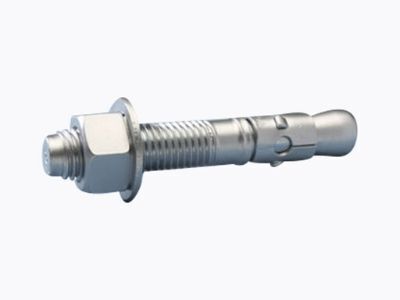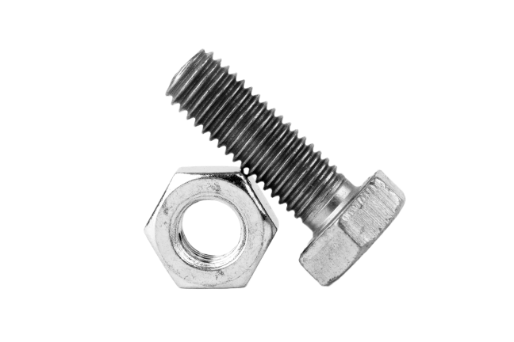
Wedge anchors are an essential element in construction that are a secure and reliable fastening method for a wide range of applications. Whether you're installing handrails, machinery, or building a new structure, choosing the right wedge anchor and installing it correctly is crucial to ensure the safety and longevity of the installation.

However, installing wedge anchors can be a challenging task that requires the proper tools and techniques in order to ensure a strong and durable hold. In this article, we will discuss the steps and best practices for installing wedge anchors, from choosing the right size and type to drilling the hole and setting the anchor.
What Is a Wedge Anchor?
Wedge anchors are composed of two elements, a carbon steel rod with threads and another piece that features an outward-tapered neck down diameter. These two components are integrated to form one unit for installation purposes.
Wedge anchors are a perfect choice for secure mounting and can be used in both light-duty and heavy-duty applications. Installing the anchor is quite simple; it consists of two parts - a steel slip or sleeve surrounding the conical section of the rod, plus a nut and washer to finish off the installation.
The standard wedge anchor is not designed for use in brick or block. One of the challenges of using wedge anchors in brick or block is that these materials can be brittle and prone to cracking or breaking under the stress of the anchor. The anchor may also not grip the material as securely as it would in concrete, which could lead to loosening or failure over time.
How Are Wedge Anchors Used?
Wedge anchors are commonly used in construction, manufacturing, and other applications where heavy loads or strong forces are involved. Their strength, durability, and ease of installation make them a popular choice over other anchors. Some typical applications include:
- Attaching structural steel elements such as beams, columns, and braces to concrete foundations or slabs
- Securing machinery, equipment, and fixtures to concrete floors or walls in industrial settings
- Fastening electrical conduit, plumbing, and HVAC systems to concrete structures
- Mounting signs, lighting fixtures, and other decorative elements to concrete surfaces
- Installing handrails, guardrails, and other safety features on concrete stairs and walkways
- Anchoring storage racks, shelving, and other storage systems to concrete walls or floors
- Fastening concrete formwork, shoring, and scaffolding to concrete surfaces during construction
- Mounting treated deck supports to concrete walls
Tools Needed to Properly Install Wedge Anchors
You will need the following:
- Hammer drill: This type of drill is the ideal tool for creating precise holes in difficult surfaces like concrete, brick, and stone. Its rapid hammering motion swiftly breaks up materials to make drilling easier and provide clean results every time.
- Carbide-tipped drill bit: A carbide-tipped drill bit is essential for drilling into concrete.
- Wrench or socket: You will need a wrench or socket to tighten the wedge anchor once it is installed in the hole.
- Safety equipment: You should always wear safety glasses, gloves, and a dust mask. This will protect you from flying debris and dust that can be generated during the drilling process.
- Wedge anchor: Of course, you will need the actual wedge anchor itself. Most applications will need 1/4" to 5/8" diameter anchors.
- Measuring tools: You may also need a tape measure or other measuring tools to ensure that the anchor is installed at the correct depth and spacing.
Step-by-Step Instructions for Wedge Anchor Installation
- Choose an anchor that is appropriate for the weight and load requirements of the object you will fasten to the concrete. To determine the correct length, add the thickness of the material to the minimum depth required to install the anchor.
- Drill a hole into the concrete using a hammer drill and a carbide-tipped masonry bit. The drill bit should be the same diameter as the anchor. Drill the hole a half inch deeper than the length of the anchor.
- Clean the hole thoroughly using a wire brush or compressed air in order to remove any debris or dust.
- Place the washer over the threaded part of the anchor and then thread the nut on, to cover the top of the anchor.
- Insert the wedge anchor into the hole, with the threaded end facing up. Tap the anchor gently with a hammer to ensure it is fully seated in the hole.
- Tighten the anchor using a wrench or socket. Turn the nut clockwise until it is snug, and then tighten it an additional 1/4 to 1/2 turn. This will cause the wedge clip or expansion ring to expand and grip the concrete walls of the hole. In some cases, you may need to tighten the nut more to meet the torque specifications required for your application.
The techniques described above are simple, but effective, and will result in a strong, durable installation.
Secure Your Project with Fastener Systems Wedge Anchors
Are you looking for high-quality and reliable fasteners and accessories for your project, look no further than Fastener Systems, Inc. (FSI). As a leading supplier of construction fasteners and tools, we have a wide range of products to suit your needs. Our products are made from the highest quality materials and are designed to last, and our team of experts is always available to provide guidance and advice on which products are best suited to your specific needs.
Contact us today for a quote or to receive our full-line catalog!


